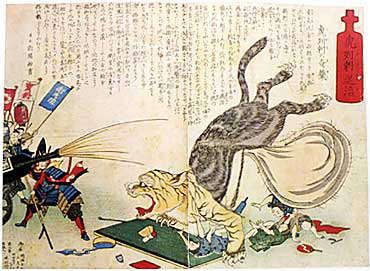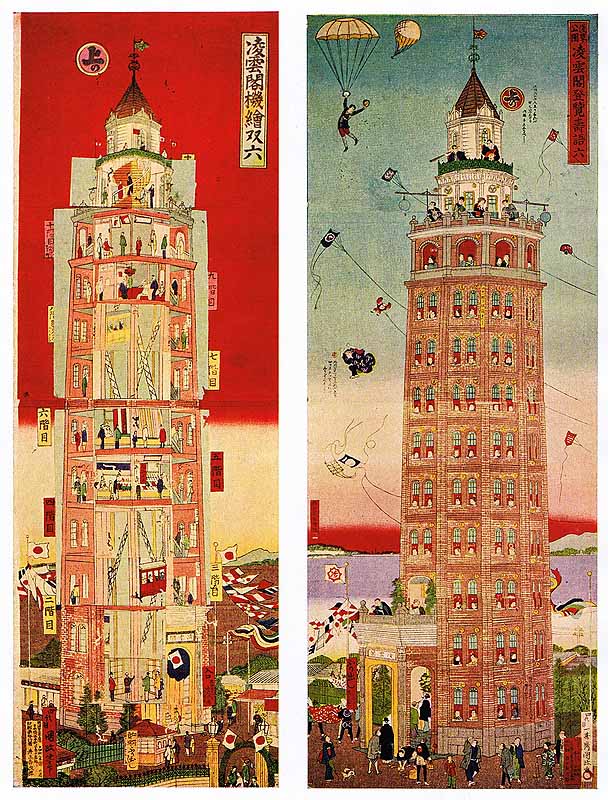By Shiomi Mano
William Kinninmond Burton is known as an engineer and a photographer. He was born in Edinburgh, Scotland in 1856. His father, John Hill Burton was a lawyer and an eminent amateur historian. His mother was the daughter of Dr Cosmo Innes who was one of Scotland’s foremost amateur photographers. Also, Burton had a relationship with Arthur Conan Doyle, the author of “Sherlock Holmes”. In 1973, he was apprenticed for five years to Messrs Brown Brothers who were Hydraulic and Mechanical Engineers of Rosebank Ironworks in Edinburgh. He left the firm in 1879 to enter partnership with his uncle in London to design water systems. In 1881, he became Resident Engineer to the London Sanitary Protection Association.
In 1887, at the age of 31, Burton was invited to Japan as a foreign government adviser to assume the post of first professor sanitary engineering at Tokyo Imperial University. At that time, Japan was suffering from several serious epidemics, especially cholera. Cholera was regarded as powerful disease and compared to a tiger. It means a tiger is ferocious and people did not have any solutions at all.
To solve this problem, Burton was invited to Japan. As soon as he arrived in Japan, he worked as a consulting engineer in Health and Medical Bureau. He was committed to providing plans for the sanitation systems and water supply of many towns and cities. Burton thought pure water was necessary to prevent cholera because in Hiroshima, people drank water which was not clean water from the river. Then, people got diarrhea and nausea. Therefore, he prepared plans for modern water plans for many Japanese cities like Hiroshima, Okayama, Sendai, Nagoya, and Kobe. Burton invented hand pump to get pure water. In Hiroshima, citizens had a ceremony to congratulate the accomplishment of water works. Also there is still pure water bottle with Burton’s picture on the label today in Shimonoseki city. He also gave a lecture of sanitary engineering in Tokyo Imperial University as a special teacher and inspired famous sanitary engineers in the future.
Burton was famous for the designer of Ryounkaku, the first western-style skyscraper in Japan. Ryounkaku was located in Asakusa and opened in 1890.
Ryounkaku was designed to attract working men and their families to visit Asakusa and became a landmark of Asakusa after the opening in 1890. It was a 225-foot (69m) tower, twelve stories and made from red bricks. The shape was octagonal and the two electric elevators served the first to the eight floor with a ten-person capacity each. These were invented by Ichisuke Fujioka, who is a founder of Toshiba, and were the first elevators ever installed in Japan. At the time, Ryounkaku was the tallest building in Tokyo. Ryounkaku was known widely as it appeared in the literary of contemporary authors such as Tanizaki Junichiro, Ishikawa Takuboku and Kitahara Hakushu. Although it survived the earthquake in 1884, it was seriously damaged and finally, was pulled down in The Great Kanto Earthquake of September 1923.
Burton was also noted as a photographer as his grandfather was lover of photographry. He actually visited the disaster areas of Eruption of Bandai-mountain (1888) and Noubi Earthquake (1891) immediately after the earthquake and took pictures. Then, he published the photo book “The Earthquake of Japan” (1891) and “The volcano of Japan”.
In 1896, Burton visited Taiwan to develop the sanitation there. At the time, Taiwan was the territory of Japan. However, he got epidemic disease and passed away on 14 August 1899 in Tokyo of a fever. He was only 43 years old. He devoted his life to development of Japan.
References
W K Burton, Engineer extraordinaire” (December 2001), attributed December 5, 2013:
http://www.thumper.com.uk/JSS/Dec2001/page-4.htm
William Kinninmond Burton / Edinburgh South West” (January 24, 2013), attributed January 16, 2014:
http://www.edinburghsouthwest.com/william-kinninmond-burton/
Rounkaku-Wikipedia, the free encyclopedia” attributed January 16, 2014: http://en.wikipedia.org/wiki/Ry%C5%8Dunkaku
W.K.Burton-Wikipedia, the encyclopedia” attributed December 5, 2013: http://en.wikipedia.org/wiki/W._K._Burton


No comments:
Post a Comment